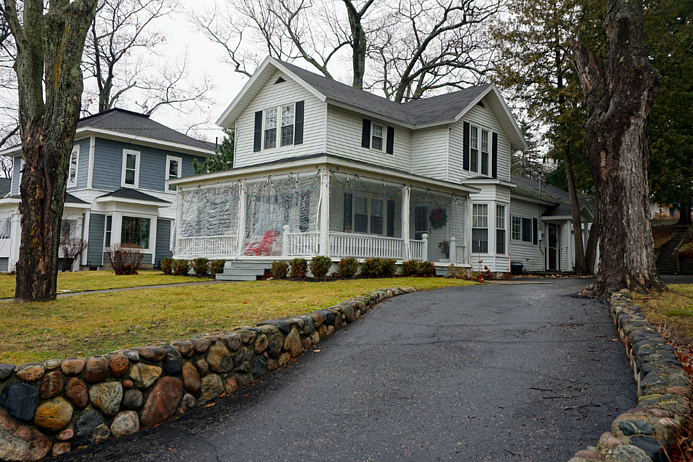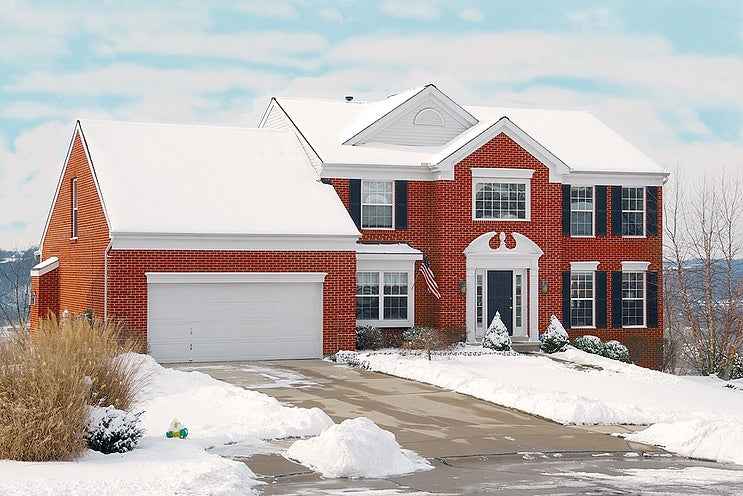
Benefits and drawbacks of heated driveways
As this winter season rolls along, some homeowners are already thinking about next winter and how they can make their life easier when it comes to driveway/walkway snow and ice removal. Among those who are thinking ahead, many are no doubt looking into in-pavement heated driveway systems and wondering if they are worthwhile and cost-effective.
The answers to these questions will vary from homeowner to homeowner based on factors such as regional climate, age/condition of the existing driveway, the homeowner’s physical fitness level, and how strongly one desires the convenience of automatic snow removal.
5 facts about in-pavement heated driveways
If you are among the foresighted, here are some facts about in-pavement heated driveways you need to know.
Fact #1: Heated driveways require you to install a mechanism beneath your driveway pavement.
Heated driveways are snow-melt systems that are embedded into the driveway and consist of four basic components: a heating element that radiates heat through the concrete or asphalt from a couple inches below the pavement's surface; a temperature-sensor that detects when to automatically kick-start the heating process; a power source (normally a cord that connects to an ordinary exterior outlet); and a control panel that allows you to preset automatic functions or to manually adjust the heat.
There are two major types of heated driveways — electric coil and hydronic. The former uses electrically charged metal coils; the latter uses a pre-heated water-based anti-freeze mixture that flows through plastic tubing and is circulated by a pump.
Fact #2: Heated driveways are effective and convenient.
They are able to melt two inches or more of snow per hour depending on the heat setting, and will keep your driveway free of snow and black ice build-up all winter long.
Fact #3: Heated driveways are expensive.
Heated driveways cost very little to maintain, but installation can run hundreds or even thousands of dollars and, if your area gets at least the average amount of US snowfall per year, the operational expense can also run hundreds of dollars. Hydronic systems cost more to install, while electric systems cost more to run, but neither is inexpensive overall.
Fact #4: Heated driveways will not shorten the lifespan of the pavement.
While it is possible for a poor installation job or a cracked pipe in a hydronic system to lead to early up-take of your pavement, these events rarely happen. In general, by eliminating the use of rock salt and the effects on your pavement of the freeze-thaw cycle, the durability of your in-pavement heated driveway will increase.
Fact #5: Installation normally requires tearing up your existing pavement.
This is not always the case with electric coil systems, since sometimes they can be retrofitted in. However in general, expect to pay extra for a new drive. If your pavement is getting to be "of age" or is "on its last leg" anyway, this extra cost may not be an issue.
Alternatives to installing a heated driveway
If, after weighing the pros and cons of installing a heated driveway, you are still unsure whether it’s the best option for you, you may want to consider the "alternatives":
- Continue to shovel your driveway and spread around rock salt or other de-icer. This option may increase your risk of outdoor injuries and decrease the lifespan of your pavement, but if you’re in good shape and your driveway already is in poor condition, this may be a reasonable choice to make.
- Hire out your snow shoveling chores. This option eliminates any health risk associated with stressful activity and cold weather, and, if you live in a low-snow area, the expense will be minimal.
- Use a snow blower (taking care that the blade doesn’t damage your driveway), a shovel for clean-up afterwards, and a minimal amount of de-icer to finish off any "trouble spots" and to prevent black ice from forming. This will reduce but not eliminate the physical strain involved and any pavement damage from salts.
- Invest in driveway-grade snow-melting mats. These mats consist of two layers of slip-resistant rubber surrounding a central heating element. Mats are also available for walkways and entryways, but driveway mats are specifically built to withstand the weight of a vehicle. They come in long strips that, while the mat is turned on, provide a snow/ice-free tire lane. Snow melts at a rate of two inches per hour—as fast as with many heated driveways—and run-off doesn’t refreeze near an active mat.
Heated driveways have many advantages that homeowners should consider, but they are expensive to install and usually require the homeowner to first tear up the existing pavement. Heated driveway mats offer the same advantages but at a lower cost, and they come with no tear-up required.


